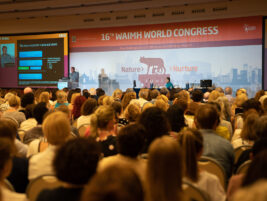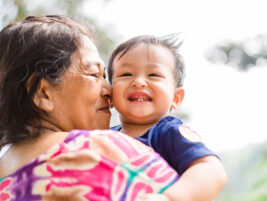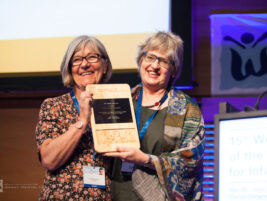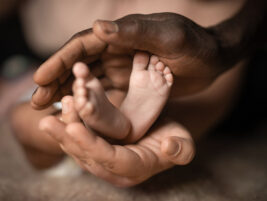Introductory Remarks
When infant mental health workers attempt to repair the disruptions of family eco-systems caused by natural or human-made disasters in cultures different from their own, they often bring interventions from their own cultures, along with the unexamined belief systems and cultural constructs that underlie them. Their understandings of those of the cultures they intend to work in are often understandably limited. Their interactions with those they intend to serve are also often marked by the trajectory of colonization and decolonization.
Cultures, in general, are dynamic rather than static. They evolve as they interact with other cultures, and in response to forces such as changing physical environments and new pressures on survival. In this important reflection, French interventionists working in Haiti after the devastating 2010 earthquake consider the encounters of their belief systems with local ones, and the stresses on the latter due both to the former and to unprecedented trauma and loss.
This qualitative summary paints a powerful picture of infants and parents who have experienced devastating losses that impact the health, emotional well-being and feeding relationship for both mother and child.
– Joshua Sparrow, Director, Brazelton Touchpoints Center, Boston Children’s Hospital –
The massive earthquake that ripped open Haïti in January 2010 heavily impacted a population already living in precarious socio-economic conditions (Hurbon 1987; Pierre et al 2012). A few months later, in that same year, the cholera epidemic struck. The Haitian population and the humanitarian services were in shock. The earthquake left more than 230 000 dead and 220 000 injured. Cholera took the lives of about 8000 people and infected thousands more. Every family in the country was affected, grieving over a loved one who was lost, lost property and livelihoods, or living with the fear of losing a sick family member. These crises led to a reinforcement of the presence of international NGOs’ humanitarian services provided by international NGOs (El Husseini 2015). Some NGOs offered healthcare services, while others offered psycho-educational and preventive activities in addition to healthcare.
This paper presents illustrations of the work of international NGOs with Haitian caregivers and young children following significant humanitarian crises. At the same time it raises important social and cultural questions about the interface of Euro-American practices within the cultural fabric of the Haitian community. It is not an exhaustive study of the humanitarian interventions and their impact on the Haitians’ cultural beliefs, but illustrates some of the barriers and also possibilities to effective intervention when there are social and cultural differences between those providing the services and those receiving them.
Method
Following the earthquake in January 2010, the cholera outbreak in October of that year magnified critical concerns related to maternal and infant health, particularly the infant’s nutritional health. Due to the high death rate, many families were unable to perform proper burial rituals for the deceased. For many Haitians, bereavement without honoring the dead affects mothers’ milk, which can, as a result, become poisonous. This led to the community’s decision to encourage mothers to feed their infants artificial powdered milk diluted with water rather than to breastfeed their infants. In contrast, the European NGO decided to intensify its community health activities by promoting awareness of the importance of breastfeeding through educational sessions.
Naturalistic observations were collected throughout the implementation of two activities organized by a European NGO in Petit Gôave-Haiti: LANPE (Lait Artificiel pour Nourrisson Prêt à l’Emploi) and AME (Allaitement Maternel Exclusif). The observer was a Lebanese clinical psychologist enrolled in a European NGO and serving in Haiti after the earthquake of 2010. Coming from a multicultural/multi-religion country and having worked for 6 years with international NGOs in her own country, this clinician was already attuned to the delicate endeavor of intertwining external knowledge and beliefs with those of local communities.
Analysis of the observations collected were drawn on the principle of complementarism as defined by the widely influential French ethnologist and psychoanalyst, Georges Devereux (1978) regarding psychological understanding of human beings: The author highlights the necessity of resorting to different but complementary perspectives in the understanding of a human phenomenon, such as the anthropological and the psychological perspectives. Moreover, Devere insisted on the major impact of the observer’s reactions and feelings on the observed phenomenon and therefore on his/her understanding and analysis. In this perspective, the observer used a multi-pronged approach as she carried out her observations:
- An ethnological exploration of the rituals and representations concerning pregnancy, birth and breastfeeding among the different ethnical groups in the regions of Grand Goâve and Petit Goâve;
- A psychoanalytical approach consisting of the analysis of her own countertransference reactions towards the persons observed, the group dynamics among the participants, the animators of the groups and herself as well as her internal reactions to the information collected from the informants. Informants were Haitian persons from different backgrounds: nurses, teachers, oungans (Voodoo priest), and pastors from different religious affiliations: voodoo, Catholic, Protestant and Muslim (only one Muslim informant knowing that the Muslim community in Haiti is very smal). Information was also collected from readings of sociology and anthropology books from Haitian and international authors.
- A psychological approach consisting of practice analysis groups (regular meetings designed for reflection on our ([1]practices, preconceptions and cultural barriers that we confronted during the field work) with the team conducting the activities of LANPE and AME described later in this article.
Observations were collected from the two phases of the project. The first phase was exploratory and lasted one month. The second phase consisted of the actual implementation of activities of LANPE and AME and lasted 10 months.
During the first phase, observations were collected during field visits, meetings with the local teams of facilitators and organizers, reading training documents pertaining to the facilitators group and reviewing previous evaluation reports of other activities. The findings of the first phase led us to add the psychosocial and cultural dimensions to the mother-infant health care activities.
During the second phase, observations were collected directly from the LANPE and AME implemented groups’ activities. Full day observations of mothers and their newborns who participated in the activities were conducted twice a week. The participants were divided into two groups: morning and afternoon.
The team of professionals/facilitators was composed of 20 participants: the Haitian coordinator of the community health program, a Canadian coordinator of the infant nutrition program, and the Haitian nurses and facilitators. All members of the team were females. Weekly meetings of 90 minutes each were held for the full duration of the study (10 months).
Two Groups: Description of Activities
- LANPE (Lait Artificiel pour Nourrisson- Prêt à l’Emploi – ready to Use Baby Formula): Nurses led this activity in a primary care center in the city of Grand Goâve. The participating group was composed of 60 mother-infant dyads. The mothers were either female adults in charge of the baby after the death or abandonment of the biological mother or biological mothers unable to breastfeed. Infants were between two and six months of age. Nurses provided the mothers with information about feeding, keeping the baby clean and handling the baby. They also demonstrated these skills. During the first week, mothers and babies came every day to monitor the baby’s reaction to the artificial milk, and then, once per week for general checkups. The babies spent half the day at the primary care center (from 8am until 2pm). They had two meals and a nap. A nurse bathed some of the infants. At each visit, the babies took their first bottle of the day, were weighed, their temperature was taken, and the weekly ration of milk was provided to the mothers. For any health problems, babies were referred to the primary care center’s pediatrician.
- AME (Allaitement Maternel Exclusive – Exclusive maternal breastfeeding): This activity was implemented with great difficulty, either because of limited access in rural areas, or due to the lack of closed spaces in the city, where public spaces would bring in numerous distractions. The purpose of the activity was to provide an awareness and prevention program for pregnant women (7-8 months gestation) and new mothers with babies (11 days to 6 months of age). 180 women participated in 16 sessions. Sessions presented the benefits of exclusive breastfeeding. The facilitators decided on the time and place where the groups would meet. All sessions started with a collective song to promote exclusive breastfeeding. While meeting with the team of professionals during the exploratory phase, we heard them repeatedly use the terms ignorance and false beliefs. Ignorance referred to lack of knowledge about the benefits of breastfeeding, and the infant’s nutritional and hygienic needs. False beliefs referred to mothers’ beliefs about adverse effects of breastfeeding, e.g.: a breastfeeding malnourished mother will become extremely weak, a grieving mother will have poisoned milk. Also, while reviewing the training documents, we found that they included a list of recommendations for the facilitators, prepared by a cluster of European NGOs, about addressing these false beliefs with the mothers. In order to get a clear idea of the “false beliefs included in the training documents, interviews were conducted with the facilitators in the field and other informants in the community in order to gather a comprehensive list of what they were asked to consider as false.
LANPE Group: Ready to Use Baby Formula
During the implementation phase of LANPE (the Ready to Use Baby Formula group), the observer noticed that participants were a bit shy at the beginning of the day. However, after the first meal, women started chatting, and then at lunch time they were so comfortable with each other that they were willing to hold or supervise each other’s babies, to leave and return. The group became a safe and containing holding environment for mothers, supporting them when they struggled to care for their babies. There were difficult moments when a mother felt challenged by her new mothering tasks and compared herself unfavorably with the “good mothers.” .The nurse was attentive to these dynamics. Her role was not only to provide care but also to help the mother to feel secure within the group environment. By protecting the mother, supporting her psychological journey and resources, the nurse helped each mother to restore her sense of self, which in turn made each more equipped to take care of her baby.
In one of the LANPE sessions, the observer noted the interaction between E. and his mother. E’s mother reported that she could not breastfeed her child because of her “severe anemia, a stomach ulcer, and an ill breast; so her physician asked her to stop breastfeeding”. E. caught our attention. At 2 months, he looked sad and stared blankly, barely interacting. While sleeping, he made us think of a dying child. His mother also had a remarkably sad gaze and avoided eye contact. Nurses reported that the mother felt suffocated when she breastfed. Nurses interpreted these sensations as symptomatic of anemia and ulcers, concluding that by continuing to breastfeed, the mother would lose her remaining energy. The psychological state of the dyad was not mentioned or specifically reported at the time.
The observer was also struck by baby CH, 2 months old, and her aunt, her substitute mother. Baby CH cried a lot while her aunt was busy dressing her. Another substitute mother told her “she should hold the baby.” A nurse held the baby, cradled her and sang to her. Then, another substitute mother took the baby, sang to her and played with her. CH’s aunt watched this lady and was amused, but only smiled at her.
In one of the AME sessions, a mother asked whether burn out impedes breastfeeding. This question pointed to the relational dimension of breastfeeding. Breastfeeding requires a mother to be “good enough,” to be available to hold and contain her baby. During a breastfeeding encounter, a lot is transmitted: the mother’s gaze, her love or her anxiety, her wellbeing or her distress. Indeed, burn out may affect breastfeeding because the mother may not feel she is available to interact. If this is the case, breastfeeding may soon become a very difficult task. However, the facilitator answered the question without exploring further. She said simply, “Burn out does not affect breastfeeding.” Had the facilitator asked the mother to elaborate further, then the psychic dimension of breastfeeding or the relational issues between the mother and her baby could have been explored. The possible psychological distress of the mother (guilty feelings, anxiety about being a bad mother, regression) might have been addressed.
In another group, a participant looked sad, avoiding her baby while the facilitator was promoting the benefits of exclusive breastfeeding. In fact, this mother didn’t have milk to give her baby. In another conversation, we learned that this mother had been pregnant during the earthquake. She had been informed that her uncle had died, information that she kept to herself to protect her relatives from a complete collapse, in particular, her own mother. She kept her grief a secret for a month, not able to share it with her relatives. This mother had identified the cause of her inability to breastfeed as grief. In this case, the facilitator did not seek to investigate her reasoning any further but had systematically referred the mother to the LANPE group. The cultural adoption of causality between grief and “dried breasts” appeared to be a common understanding in this Haitian community, and did not require an alternative explanation.
Reflections and clinical interpretations
These feeding experiences can be understood as relational moments, from our perspective. Based on the Euro American established psychological paradigm in mother infant observation (as applied by the likes of Tavistock clinic in the U.K., GERPEN in France, Martha Harris Study Centers in Italy, and the Washington School of Psychiatry) significant interpersonal dynamics may be explored during the feeding experience. However, in the LANPE setting, the facilitators were not prepared to use the feeding experience as a time for psychological exploration. They simply answered the mothers’ questions about milk production directly, and offered them the use of artificial milk for their babies. The same was true for the AME group, where the facilitators simply explained the importance of exclusive breastfeeding.
In times of catastrophes when a community is vulnerable and socio-economic difficulties are exacerbated, mothers and substitute-mothers may seek NGOs help. LANPE groups and AME sessions could be safe spaces where emotional needs may emerge. They may have the function as a “transitional space” as per D.Winnicott (1971). This space of temporary containment and support, can introduce women to palliative approaches in times of crises. The moments at the LANPE and AME programs provide a reprieve for mothers and babies from their daily-life, encapsulate them in a special time and space, and help them establish a sense of continuity and community. Bonds between groups of dyads and nurses or facilitators are therefore established as safe and therapeutic. This transitional space offers the possibility for reflection about mother care and motherhood and the beginning of the mother-baby’s bond.
The LANPE allows focusing on the care provided to the baby, the mother-baby interaction, and the physical availably of the mother while feeding. The nurse has the nurturing role giving the milk to the mother, supporting her in case of difficulty. A mother can identify with the nurse and with the other mothers interacting with their babies; she can also rely on other mothers when having a hard time with her child, as described for baby CH. A crying baby, constantly dissatisfied, may trigger in his mother a feeling of failure. A depressed or anxious mother, unable to invest in a peaceful relationship with her baby, finds herself in a vicious cycle in which the baby’s cries make her feel more distressed. Seeing her baby smile and become quiet in the arms of another mother may at first awaken feelings of rivalry and inadequacy, yet the support and validation from the group seemed to allow a mother to discover another face of her baby and herself. Mothers who come to the group with guilty feelings, failure, rivalry, etc. may benefit from a nurse/facilitator who can take note of these issues.
For all these reasons, the LANPE may serve as a pivotal space for prevention and early intervention, to support the mother-baby dyads in a critical moment when options remain open. It is a phase when the attachment relationship between baby and mother/substitute mother is built, often after an abrupt separation: a sudden weaning for medical reasons, or a more devastating separation, the death of the mother, or the abandonment of the baby.
While facilitating the awareness sessions of the AME, facilitators emphasize the nutritional component of exclusive breastfeeding, the hygiene of the baby and the mother, and educate participants using nutritional and economical arguments. The relational dimension, if it were addressed, might explore psychic, inter-generational and cultural nuances and modalities.
The educational aspect of the sessions reassures pregnant women about the good quality of their milk, allowing them to dream about their baby’s healthy development and to fantasize about breastfeeding moments. The group is potentially a space to contain the anxiety of participating mothers. It is a space where each mother can ask questions and express her worries about the milk nourishing her baby, provided that one takes the time to listen to each mother’s discourse and the anxiety it carries. Making room for psychological expression would complement the focus on medical and nutritional knowledge.
Ruptures in the cultural dimension
Something about the potentialities of these two spaces was interfered with. Beliefs related to the cultural birthplace (Moro 1994) of these mothers remained hidden, reduced to the notions of false beliefs and ignorance. These notions were overly emphasized in the teams’ meetings and debriefing, as well as within the training delivered to the Haitian team.
Culture offers a logical understanding and traditional causal hypotheses that reassure the mother who cannot breastfeed and frees her from her guilt. The cultural etiology encrypts these anxieties in the collective representations trans- generationally transmitted. Collective crises and potential traumas may create a rupture in the continuity of the cultural transmission, This includes the massive intervention of NGOs, and their disruption of the long-established harmony between Euro-American medicine and traditional Haitian culture that Haitian society had evolved. This resulted in a defect in the cultural envelope that protects collective representations. When traditional and internalized collective convictions are shaken, a door to doubt and confusion is opened. The new transmissions that the NGOs dispense penetrate these openings and act as external objects that are difficult to integrate.
Concepts of “false beliefs” and “ignorance” were used by the NGO to refer to a cultural heritage transmitted from generation to generation, from mother to daughter, from mother to mother to be. Despite the new knowledge’s consistency with the medical perspective, the message conveyed through the disruption of certain cultural beliefs can be experienced as profoundly paradoxical, especially if it is not intertwined within the cultural canvas.
These sessions occur in remote meeting places which require both parties to walk up to four hours. Therefore, they address a group of people that relies only on the knowledge of its ancestors. The introduction of new and strictly medical knowledge, knowledge that is not in harmony with knowledge that is culturally transmitted or perhaps opposed to it, may not be readily accepted or assimilated. To illustrate this, in one of the AME sessions, while the facilitator was presenting hygiene precautions, an old lady sitting nearby, told a mother she shouldn’t breastfeed. Two contradictory messages were simultaneously conveyed to the mother.
Recommendations
Reaffirm the legitimacy of cultural knowledge: new understanding and intervention
Psychosocial responses to collective crisis are of paramount importance, however they involve, among other factors, social and cultural dimensions that warrant extensive exploration. As psychosocial interveners in humanitarian contexts, deepening our cultural knowledge regarding the field we are working in seemed to be an important but insufficient step. It needs to be hinged on a more profound psychological process which entails the exploration of our own cultural otherness regarding the culture we are encountering. Another major concern is related to the carriers of our external knowledge: the Haitian facilitators and nurses coached and trained by foreigners and working with a vulnerable population.
In the Haitian culture, mother’s milk has a pivotal meaning. It carries the emotional bond between mother and child and it may heal or harm the child’s health. Excluding this cultural belief creates a rupture in the cultural transmission. It denies to the facilitator the access to the internal mental representations of the participants, as well as to their own.
This denial is subtly perceived in certain awareness sessions when a facilitator gives the participant a direct and closed answer to a question. By systematically and solely referring to the knowledge received during the training, facilitators are preventing themselves from providing culturally sensitive recommendations.
Based on our first sets of observations, and to address the cultural rupture, we explored the cultural representations of femininity and maternity in our meetings with the facilitators. We wanted to enable the professionals to understand the situations and conflicts that may potentially harm the relation between the mother and the infant, preventing her from breastfeeding him and/or building a good enough relationship.
This exercise provided a space for active listening, allowing the expression of anxiety for “both parties”: the observer and the Haitian facilitators. All professionals explored again their cultural representations, allowing themselves to self-reflect. As an expatriate, the observer could reflect again on her personal collective cultural representations along with the facilitators. They realized then that reducing the resistance of the mothers to an irrational fear reflects their own defense mechanisms towards the resurgence of ancient cultural beliefs considered as obsolete. These beliefs had to be repressed by the perceived necessity to identify with Euro-American civilization.
Representations about pregnancy and delivery were awakened during the meetings with the field workers. They delved into their past and found the theories pertinent to their culture. For example, if a death occurs in a family, a pregnant woman doesn’t wear traditional attire that signals “grief” and doesn’t participate in the funeral. A pregnant woman is protected from sorcery throughout her pregnancy; a breastfeeding mother may have salted milk that kills the baby. Illness in the Haitian culture is complex and has a completely different meaning than in the western culture. Illnesses can be natural, sent from God, the Lwas, or the devil. Each category has its referral system: Euro-American medicine, traditional medicine or a combination of both. The traditional medicine relies on doktè fey (leaf doctor), or oungan (priest); a healer can master both skills.
During the discussions with the professionals, we noticed that certain traditional references are integrated and accepted without question. For example, a mark on the skin of the infant is a mark that shows the mother’s desire for an unavailable food item. The imperative to bury the placenta to avoid sorcery, is another example, and the salting of maternal milk when she grieves, making the milk poisonous to the infant. As these beliefs and rituals were re-evoked, the facilitators became keener to embrace their own mothers’ and grandmothers’ stories. Their reactions and feedback to the mothers-participants became more nuanced, allowing more space for spontaneous expression. They became able to pause and turn away from the Euro-American knowledge for a while, to listen to the mothers’ own representations about breastfeeding and delivery, inviting them to share this common knowledge with the group. This, in turn, helped the transmigration of hybrid knowledge – inasmuch as Euro American knowledge is a melting pot of beliefs and empiricism – into the previous representations and to integrate it instead of rejecting it as totally strange to the culture.
To summarize, globalization is also globalization of conflicts and globalization of emergency response. This valuable endeavor is vital to peoples struggling with poverty and general social and governmental disruptions in times of crisis. International NGOs involved in rescuing and providing psychosocial support to local peoples face major challenges: preparing and protecting their staff in emergency contexts, understanding the local culture, and adapting their tools and interventions to the recipients’ needs and belief system. The challenge is to act immediately and efficiently using a culturally sensitive approach as recommended by the IASC (2014). However, the understanding of “culturally sensitive” is not defined clearly and presents two major blind spots: culture is not an entity but an ongoing and multi-layered process; local staff representing this cultural knowledge are not often offered the possibility to discuss and object openly to what may be considered as ‘scientific’ and ‘more developed’ Euro-American knowledge.
To ensure adequacy and efficacy of their services, the International NGOs need to include an ethnological perspective while applying psychosocial interventions. Their programs can account for cultural specificities by providing a safety net to the facilitators i.e. waiving the requirement to apostatize in order to get remunerated. Interviewing local community members about their preferences and their beliefs prior to the implementation of the intervention, and creating focus groups that run concurrently to the implementation allowing self-reflection and adjustment of the material to the local population are key to enhance the success of any foreign psychosocial intervention
Conclusion
A newborn’s survival largely depends on the care the ambient/sufficient environment provides. This environment is assumed to be good and strong enough to offer nutritional, hygienic, medical and, as importantly, emotional care. In a stable environment, giving birth provokes major psychic changes in the mother’s mind. She needs for herself first, a supportive and containing environment to be able to contain her baby’s emotional distress. The elaboration of the mother-baby dyad is a delicate process, permeable to any disturbance with serious repercussions to both mother and baby.
In 2010-2011, the already vulnerable Haiti population, struggling with losses, fears, and the threat of death, received services through different activities (El Husseini 2015). LANPE and AME activities are implemented in a specific cultural setting, loaded with mental and spiritual representations. A retrospective question is posed: Is the Western medical discourse providing reassuring answers? In the Western discourse, an illness of the baby or the mother is defined and labeled as per specific criteria leading to diagnosis and treatment. In the Haitian culture an illness has mixed meanings. It is physical as much as it is spiritual. Are the spiritual beliefs taken into account while presenting the Western concepts?
This paper does not pretend to answer these fundamental questions. In order to be successfully adapted to other cultures, Western psychosocial interventions must not overlook or neglect spiritual and cultural dimensions of illness and health. When one wants to implement services one should primarily consider these elements. Understanding local resources and culture may facilitate the reception of new ideas while supplementing local assets, rather than engaging in acts of cultural imperialism, in which external knowledge – that may be irrelevant and possibly detrimental – is imposed with the assumption of its superiority.
References
Devereux, G. (1978). Ethnopsychoanalysis: psychoanalysis and anthropology as complementary fraes of reference. Berkely (Cal.): University of California press.
El Husseini, M., Mouchenik, Y., Moro, M.R. (2015). Figuration de l’histoire originaire collective à travers sa réverbération traumatique en Haïti, in L’Autre- Cliniques, cultures et sociétés. Paris: La pensée sauvage, 2015/1 (volume 16).
Hurbon, L. (1987). Comprendre Haïti. Essai sur l’état, la nation, la culture. Paris: les éditions Karthala.
Hurbon, L. (1999). Les mystères du vaudou. Paris: Découvertes Gallimard.
IASC Guidelines on Mental Health and Psychosocial Support: What should Humanitarian Health Actors Know? (2010)https://www.who.int/mental_health/emergencies/what_humanitarian_health_actors_should_know.pdf
IASC Recommendations for Conducting Ethical Mental Health and Psychosocial Research in Emergency Settings (2014)https://interagencystandingcommittee.org/node/9061
Interagency (WHO, UNFPA, UNHCR) (1999). Reproductive Health in refugee situations, United Nations High Commissioner for Refugees. https://www.who.int/reproductive-health/publications/interagency_manual_on_RH_in_refugee_situations/full_text. pdf
Inter-agency Working Group (2007). Reproductive Health in Crises, Corrections to the Inter-agency Field Manual. www.rhrc.org/iawg/
Moro, M.R. (1994). Parents en exil. Psychopathologie et migrations. Paris: PUF, 1998.
Moro, M.R. (2004). Psychothérapie transculturelle des enfants et des adolescents. Paris: Dunod.
Pierre, A., Minn, P., Sterlin, C., Annoual, P.C., Jaimes, A., Raphaël, F., …Kirmayer, L.J. (2010) Culture and mental health in Haiti: a literature review. World Health Organization.
Review of the Implementation of the IASC Guidelines on Mental Health and Psychosocial Support in Emergency Settings. How are we doing? (2014)https://interagencystandingcommittee.org/node/9056
Winnicott, D.W. (1971). Playing and reality. Oxford: Routledge classics. 2005.
World Health Organization (2000). Reproductive Health during Conflict and Displacement; A guide for programme managers. https://www.who.int/reproductive-health/publications/conflict_and_displacement/pdf/conflict_displacement.pdf
World Health Organization (2003). Managing Newborn problems. A guide for doctors and nurses. https://www.who.int/making_pregnancy_safer/publications/archived_publications/mnp.pdf
World Health Organization (2007a). Key steps for maternal and newborn health care in Humanitarian Crisis. https://www.who.int/maternal_child_adolescent/documents/keysteps.pdf
World Health Organization (2007b). Integrated Management of Pregnancy and Childbirth (IMPAC) WHO Recommended Interventions for Improving Maternal and Newborn Health. https://whqlibdoc.who.int/hq/2007/WHO_MPS_07.05_eng.pdf
Authors
El Husseini, Mayssa’ PhD
Leyla Akoury Dirani, PhD
Elhusseini Rami, Licensed nutrionnist
Moro, Marie Rose, Professor








